A Carnegie Legacy in Dodge City
Gunfighters, buffalo hunters, drifters, railroad builders, traders, and soldiers from Fort Dodge, just up the road—that was Dodge City, Kansas, in the 1870s. Wyatt Earp, Bat Masterson, Doc Holliday, and Miss Kitty—those are some of the characters who passed through or settled there. The Atchison, Topeka and Santa Fe Railway stopped in Dodge City to move buffalo and later the Longhorn cattle from Texas. It was a famously lawless town with saloons, gambling, brothels, and shootouts. In a brief 15 years, the stuff of legends abounded, with staying power enough to draw tourists to sample it even today.
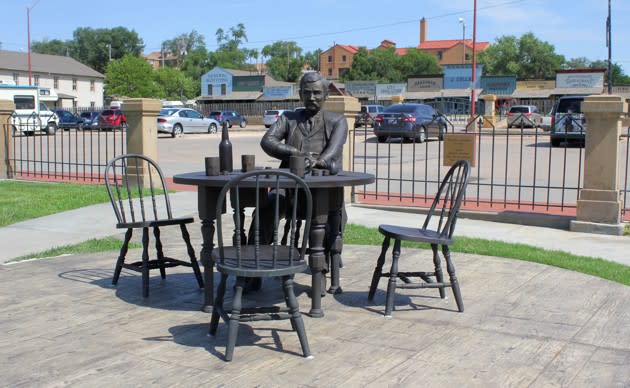
Fast forward two decades: electricity, water wells, sewer lines, a fire department, graded streets, and telephones arrived. Then, in 1905, another milestone: A group of distinguished Dodge City residents, including a doctor and a judge (Edward Madison, later a U.S. Congressman from Kansas), was inspired by the women’s club of Dodge City to write to Andrew Carnegie requesting support to build a library. Carnegie was already building five libraries in Kansas that year, and he granted Dodge City $7,500 for theirs. The city pledged a tenth of that sum each year to maintain the library, and they commissioned an unusual Free Eclectic Style design with a rounded front, placed diagonally, that commanded the southern corner view of commercial Second Avenue.
Recommended: Hollywood Has Ruined Method Acting
The library couldn’t keep up with the town, and in 1936, the town raised money, paired it with support from the WPA, and doubled the size of the library. Thirty years later, the library needed more space again, but this time, the town failed to raise the money. The library moved instead to the old Montgomery Ward building a few blocks away. In the 1970s, the building was home to two restaurants and three private clubs. In 1979, it earned a designation in the National Registry of Historic Places. The community and the Kansas State Historic Preservation Office preserved the building and today it’s home to the Carnegie Center for the Arts.

We were lucky enough to be in Dodge City on a Final Friday evening for the monthly visual, culinary, and performing arts walk around town, which kicked off at the Carnegie Center. That Friday in June featured Wanda Adamson, a quilter from nearby Jetmore, a town of 850 people just north of Dodge City. People milled about and then drifted down to the Second Avenue Art Guild for more wine and cheese.
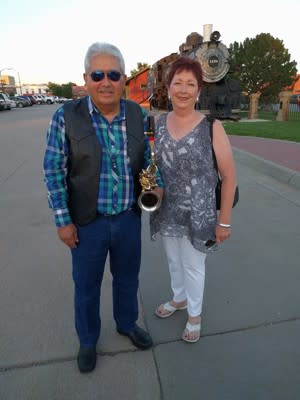
There we met John and Connie Chavez. He’s a saxophone player with the Dodge City Cowboy Band, a community band since 1879, and still performing for the town weekly during the summer. We also met a young artist, Jake Hendrix, part of a family of artists showing their work that night, who still worked on the family farm and was also launching a startup, Hendrix Keg Company, to make CO2 cartridge-powered mini-beerkegs with his brother Rob.
We ambled down to the final venue, the old Dodge City railway depot, a Richardsonian Romanesque building from the bustling rail days in 1896, and now an Amtrak stop for the Southwest Chief, which comes through town a few times a day. Mark Vierthaler, new marketing director of the startup Boot Hill Distillery, formerly of more established Servi-Tech, an agronomic services provider, was pouring his signature drink, “The Playa,” a concoction he makes from light rum, lavender syrup, and elderflower liquor.
Recommended: When Parks Were Radical
Meanwhile, back at the Dodge City Library: Today, the Dodge City Public Library has a new home, built in 1981. Cathy Reeves is the library director. We talked about how libraries today work to get themselves out and into the communities that they serve. Reeves told me that one of her ways of doing that is to challenge the staff to have their elevator speech at the tip of their tongues when people ask, “Hi, how’s it going?” Their answer, she suggests to them, can highlight some news and activities of the library.
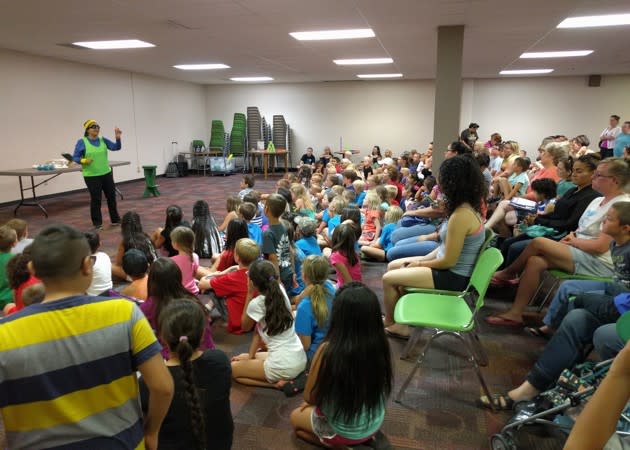
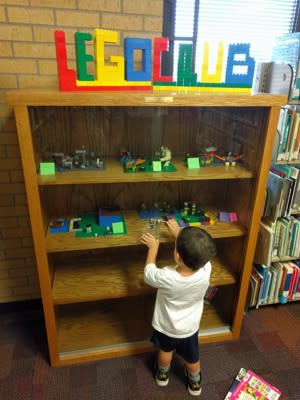
The librarians have plenty to talk about. They have summer-reading programs, Lego Club for kids, lots of activities plus a Facebook site for the teens, information sessions about local issues, like the arrival of a new air service for the Dodge City airport, presentations by the Kansas Humanities Council, and first Tuesday “Coffee, Donuts, and a Movie.” The only requirement for that one is that you have to watch the movie to get the donut.
It serves the older folks, like one man I chatted with who was sitting comfortably reading the newspapers and keeping an eye on his stocks on the closed caption TV. Other adults went for the coloring books, which is a comeback fad of many generations beyond elementary schoolers today.
There are shelves of videos, CDs, and playaways, an audio player. A dedicated Spanish-language portal on the website is chock-a-block with information and resources for the Spanish speakers of Dodge City, now 60 percent of the population. Dodge City is a Family Place Library, offering all sorts of resources, workshops, and connections for parents and caregivers who are learning to raise young children.
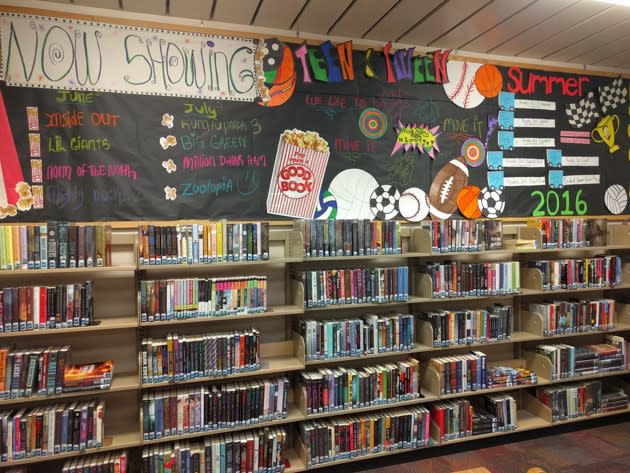
There were scads of kids in the library each time I visited; they were searching for books, working on their summer reading programs, playing in the early childhood area, coloring and drawing. One day, I stopped in the big multi-use space in the lower level where at least 250 kids, with adults in tow, had come for a demo and program with a traveling group from the Wichita Exploration Center. A few middle schoolers were helping the kids run around obstacle courses, climb through tunnels, and try archery. I asked one of the young volunteers where she would be if not the library on that hot day. “Probably at the pool,” she said, which was indeed where I saw lots of kids, including the town’s swim team, who showed up as early as 6:30 a.m. when I swam laps there.
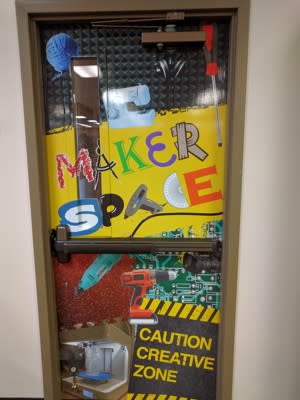
The newest feature of the library is the makerspace. It was the brainchild of Chris Dressler, a young Dodge City resident who grew up shouting distance from the library and used to frequent it in his youth, before he went off to study computer science. Reeves said that Dressler badgered her for more than a year to find room for a makerspace. It finally happened and is now off to a quaintly modest start, with a donated sewing machine, hobbyist things like jewelry and leather tools, and a glue gun. The piece de resistance is a small 3-D printer, which Dressler will help anyone learn to use. The librarians said it will take a while for people to find their way to the makerspace and begin using it more. For starters, their monthly Maker Club partners with the Second Avenue Art Guild.
I think Andrew Carnegie would enjoy seeing the synergy among arts and civic life that has grown out of the library he sponsored, and he would appreciate its legacy as well as inspiration for today’s thriving Dodge City Public Library.
Read more from The Atlantic:
This article was originally published on The Atlantic.